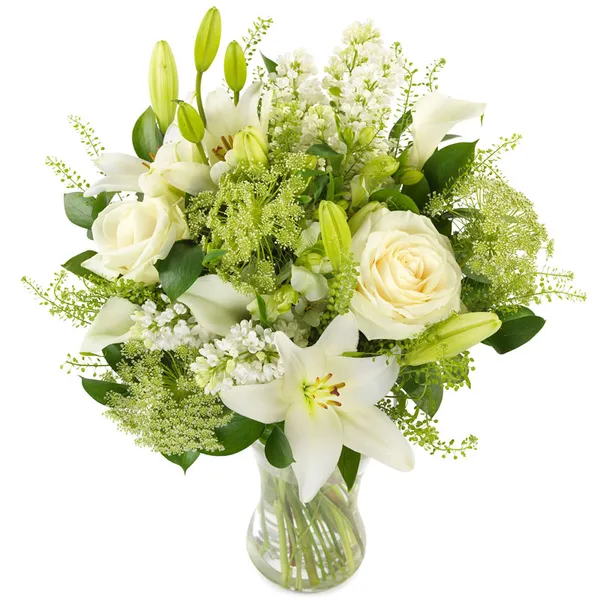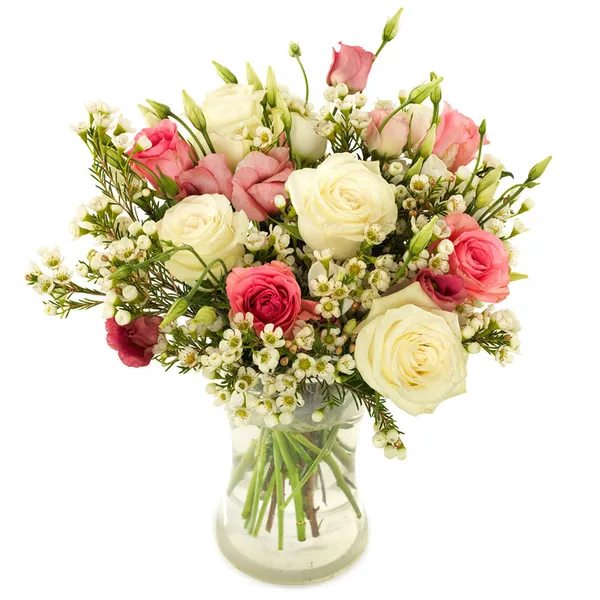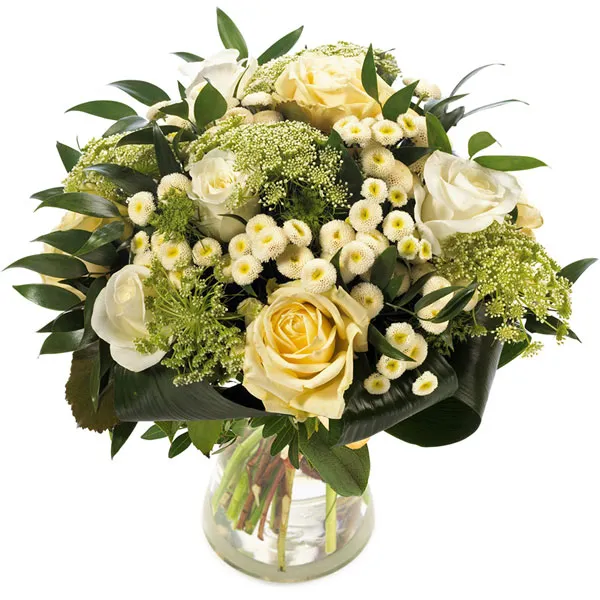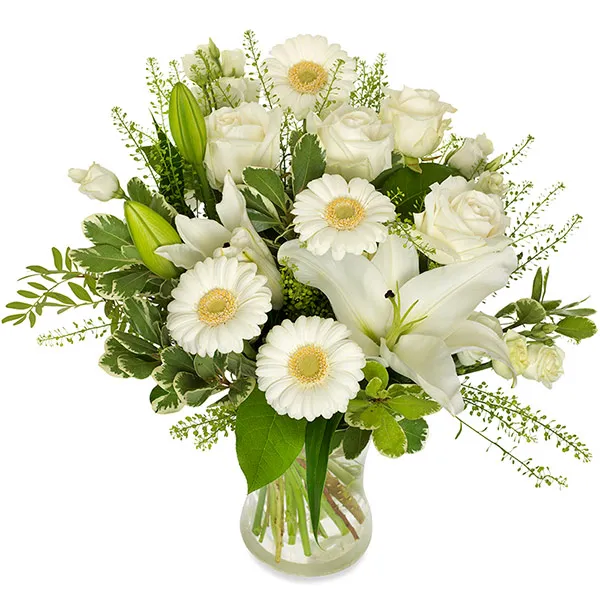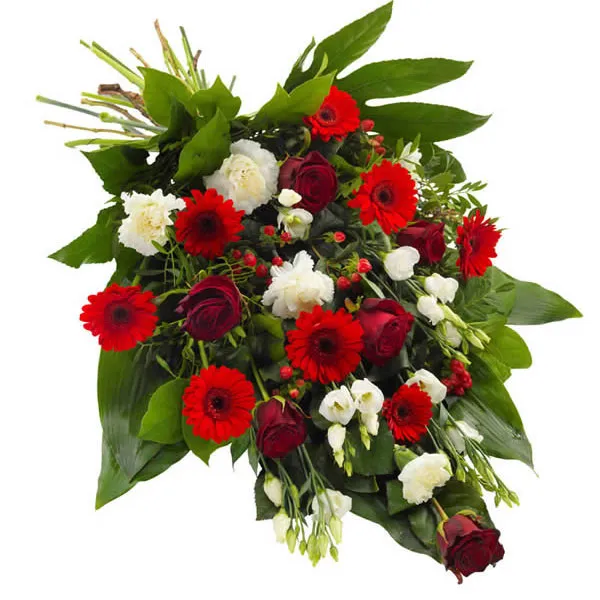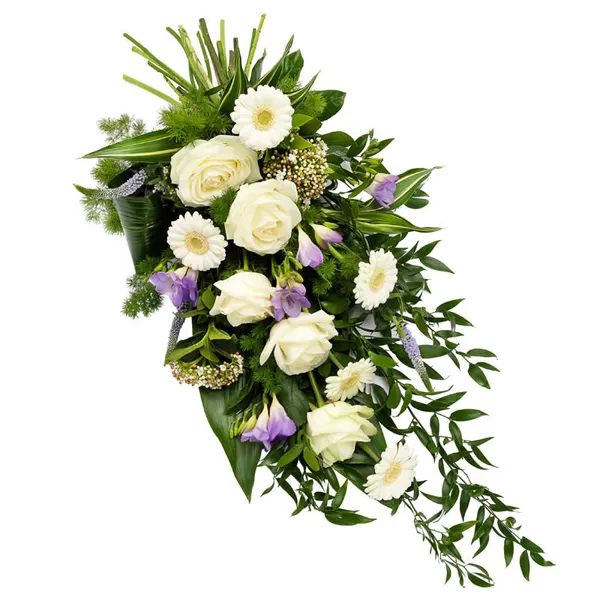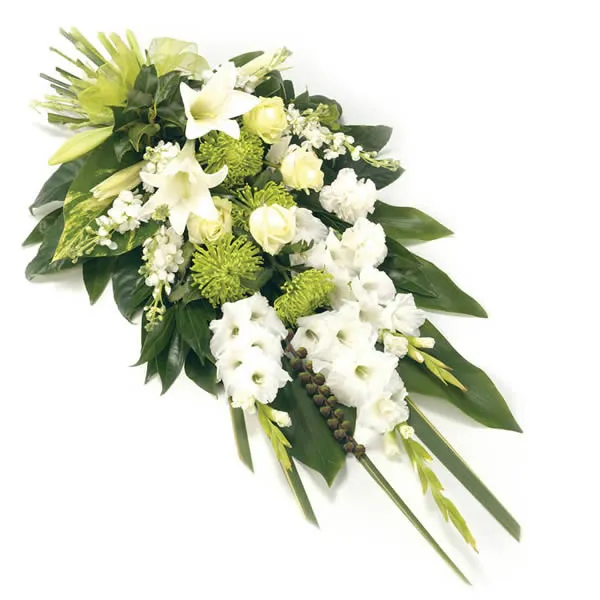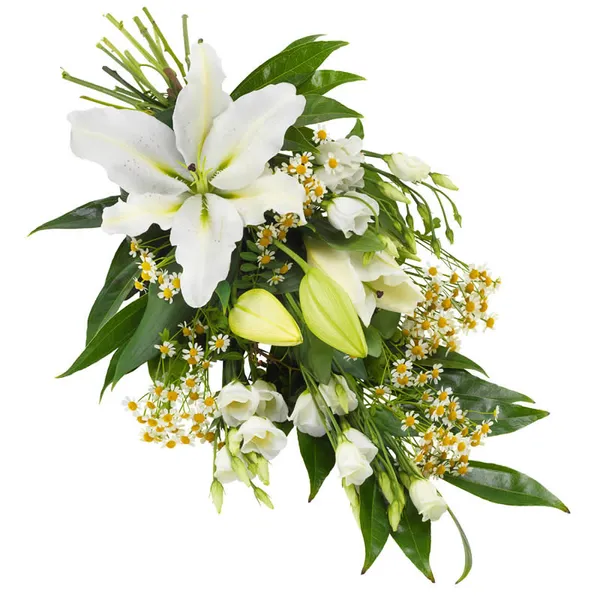Funeral flower etiquette
The passing of a loved one is an immensely difficult and emotional experience, one that often leaves us searching for ways to express our condolences and support for those who are grieving. During these challenging times, flowers have the power to convey emotions and offer comfort in a way that words alone cannot. With diverse options and traditions, it's important to choose arrangements that offer solace and avoid unintended missteps. In this guide, we will delve into the world of flower etiquette for funerals, helping you navigate the complexities of choosing and presenting flowers with grace and sensitivity.
Related pages: Funeral flowers | Sympathy flowers | Funeral wreaths
When should you send sympathy flowers?
There's no single "right" time to send sympathy flowers, but here's a helpful guide based on different situations:
For bereavement
- As soon as you hear of the death: This shows your promptness and support during the initial shock and grief.
- After the funeral: Though traditionally sent before or during the service, sympathy flowers can still be a thoughtful gesture even weeks later, reminding the grieving that you're still thinking of them.
- Special occasions: Consider sending flowers on anniversaries of the death, birthdays of the deceased, or holidays to show ongoing support.
For other situations
- Serious illness: While in the hospital or during recovery, flowers can brighten their day and show you're thinking of them.
- Other hardships: During any difficult time, like a natural disaster, flowers can offer a gentle gesture of support and care.
Where should you send sympathy flowers?
Where to send sympathy flowers depends on the situation and preferences:
For bereavement
- Home of the bereaved: This is the most personal option, offering comfort in their private space.
- Funeral home: Coordinate with the funeral director to ensure timely delivery, but be aware that these may not be taken home afterwards.
For other situations
- Home of the recipient: For situations like illness, sending flowers directly to their home offers comfort in their personal space.
- Hospital room: When someone is hospitalised, sending flowers can brighten their environment and show you're thinking of them.
Which flowers at a funeral?
Below you will find which flowers are fitting for a funeral and what each colour represents.
•Lilies: Lilies, particularly white ones, are often associated with funerals and symbolize the restored innocence of the departed soul. They are a populair choice for funeral bouquets.
•Roses: White roses symbolise purity and reverence, while red roses express love and respect. You can choose the colour that best reflects your feelings.
•Carnations: White carnations represent love and innocence and are often used to honour the memory of the deceased. Red carnations can symbolise admiration, while pink ones can signify remembrance.
•Chrysanthemums: In many cultures, white chrysanthemums are commonly used in funeral floral arrangements and are associated with honour and respect.
•Gerberas: Gerbera daisies, with their vibrant and cheerful appearance, can bring a touch of brightness and optimism to a somber occasion. White symbolises purity and innocence, making it a fitting choice for showing empathy. Yellow symbolises friendship and happiness, making it a good choice to remember the happy memories of the deceased.
What colour are sympathy flowers?
There's no one "right" colour for sympathy flowers, as it depends on various factors like your personal preference, the recipient's personality, and cultural norms. Here's a breakdown of common choices and their meanings:
- White is the most common colour for sympathy flowers, symbolising peace, purity, innocence, and reverence. Popular white flowers include lilies, roses, and chrysanthemums.
- Often associated with love, compassion, and grace, pink is a comforting choice. Lighter shades signify innocence and purity, while deeper shades express gratitude and appreciation.
- Symbolising hope, friendship, and warmth, yellow can be an uplifting choice.
- Pastel shades of pink, blue, and purple represent love, sympathy, and remembrance. These colours can be a good option if you want something more cheerful than white.
- Purple denotes respect, admiration, and dignity, often associated with wisdom and spirituality.
What shouldn’t you do when sending sympathy flowers?
What’s the etiquette for sending flowers when someone dies? Sending sympathy flowers is a thoughtful gesture to express your condolences during a difficult time. However, there are some things to avoid to ensure your message is conveyed appropriately. Here are some key things not to do:
Leave the card blank: Even if you find it hard to express yourself, including a heartfelt message in the card is crucial. It shows you care and allows you to personalise your gesture. A simple "Thinking of you" or "With deepest sympathy" is better than no message at all.
Choose flowers based on your own preferences: Consider the recipient’s favourite flowers, colours, or personality rather than your own.
Neglect cultural or religious sensitivities: Some cultures have specific customs regarding flowers and mourning practices. Research beforehand to ensure your gesture is respectful and appropriate.
Funeral flower etiquette across cultures
Funeral flower etiquette varies widely across cultures and countries, reflecting the diverse ways in which people pay their respects to the departed.
• Islamic funeral flowers: In Islamic funeral etiquette, simplicity is key. While flowers are not traditionally a prominent part of Islamic funeral rituals, they can be used sparingly if desired. White blooms like roses or lilies, symbolising purity, are a good choice. Keep arrangements modest and avoid extravagance. A white and simple funeral bouquet with roses would be a good choice for a Turkish funeral, for example. Remember that the focus is on prayer, remembrance, and supporting the grieving family, with flowers playing a secondary role.
• Surinam funeral flowers: Surinamese funeral flower etiquette combines elements of diverse cultures, reflecting the country's multicultural heritage. Flowers are often a significant part of Surinamese funerals. Common choices include white flowers, which symbolise purity and respect. However, various colourful blooms, such as red roses and marigolds, are also used to celebrate the life of the deceased. Traditional Surinamese rituals may include placing flowers on the casket or creating floral arrangements shaped like animals or objects representing the person's life.
• Hindustani funeral flowers: In Hindustani funeral customs, flowers, especially marigolds, hold great significance. Marigolds symbolise purity and spirituality, often used as garlands to honour the deceased. White flowers like jasmine and lotus are also common choices. Floral offerings are a mark of respect and encouraged during funeral rituals, but it's important to keep them modest and in line with the solemnity of the occasion.
Frequently asked questions funeral etiquette
Funerals are typically held shortly after a person's passing, usually within a week. The specific timing can vary based on cultural, religious, and logistical factors. Holding a funeral promptly allows loved ones to come together to mourn, pay their respects, and find closure.
A typical funeral service usually lasts about 1 to 2 hours. However, the entire funeral process, including viewing, processions, and receptions, can extend for several hours or a whole day. The exact duration varies based on customs, traditions, and family preferences.
Funeral flowers can be placed around the casket, on the grave, at the funeral venue, and even inside the casket. The specific location depends on the family's preferences and cultural customs.
Text on the mourning ribbon serves as a lasting farewell message or tribute to the deceased. To make it personal, the name of the deceased is often also used. In our article about condolence texts you will find example texts for the funeral ribbon.
